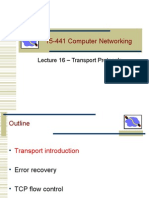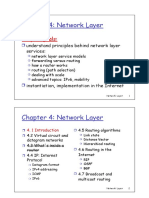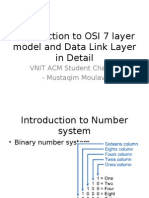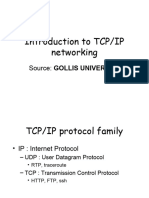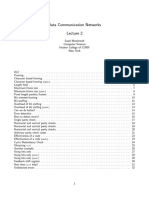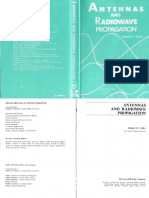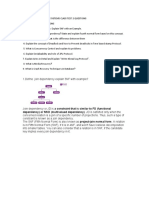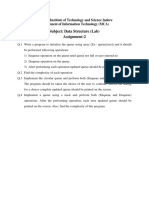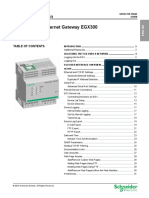0% found this document useful (0 votes)
116 views32 pagesError Control: An Engineering Approach To Computer Networking
The document discusses various techniques for error control in computer networks, including CRC, sequence numbers, and retransmissions. CRC can detect all single bit errors and many multiple bit errors using polynomial division. Sequence numbers are used to detect lost, duplicated, or reordered packets, and retransmissions are used for correction. The optimal size of sequence numbers depends on factors like transmission rate and maximum packet lifetime in the network. Selective retransmission aims to only retransmit lost packets rather than all packets in the window.
Uploaded by
Vaigas ThiruvananthapuramCopyright
© © All Rights Reserved
We take content rights seriously. If you suspect this is your content, claim it here.
Available Formats
Download as PDF, TXT or read online on Scribd
0% found this document useful (0 votes)
116 views32 pagesError Control: An Engineering Approach To Computer Networking
The document discusses various techniques for error control in computer networks, including CRC, sequence numbers, and retransmissions. CRC can detect all single bit errors and many multiple bit errors using polynomial division. Sequence numbers are used to detect lost, duplicated, or reordered packets, and retransmissions are used for correction. The optimal size of sequence numbers depends on factors like transmission rate and maximum packet lifetime in the network. Selective retransmission aims to only retransmit lost packets rather than all packets in the window.
Uploaded by
Vaigas ThiruvananthapuramCopyright
© © All Rights Reserved
We take content rights seriously. If you suspect this is your content, claim it here.
Available Formats
Download as PDF, TXT or read online on Scribd
/ 32



















